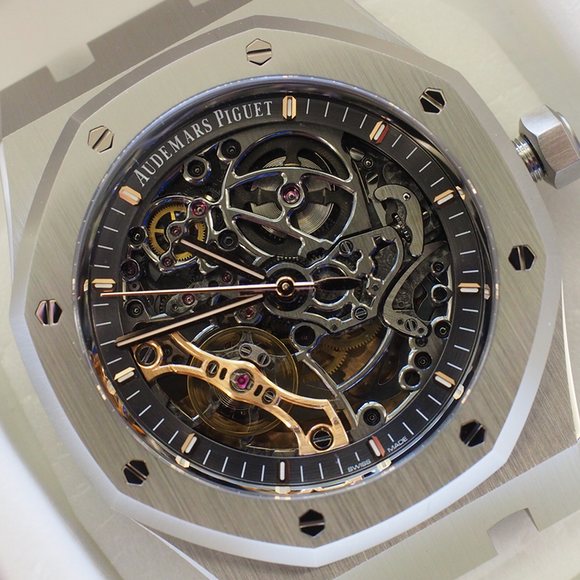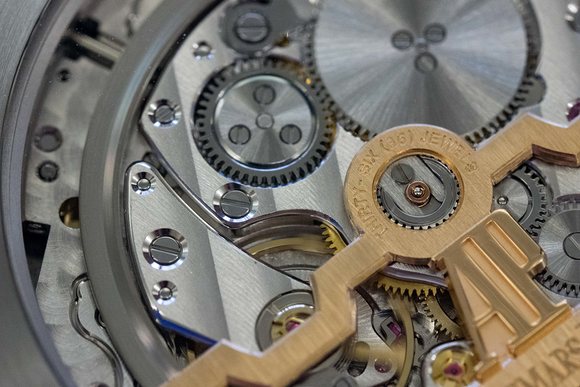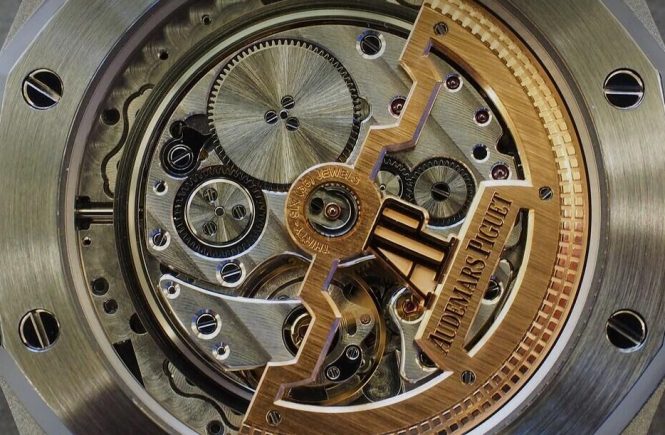In every field there are things that everyone takes for granted – usually because of their ubiquity, or because they’ve been around forever, or both. In watchmaking, there are a lot of these, thanks to how long watchmaking has been around, and also thanks to its fundamentally incremental nature. Spring bars are a good example; certain aspects of movement decoration are another. Of the latter, there might be nothing more ubiquitous than Geneva stripes, or waves, or, to give them their proper name, Côtes de Genève. They can be seen, executed to varying degrees of fineness, in watches at just about every price point imaginable, but when were they first used, and why?
Movement finishing exists for many reasons: as a manifestation of craft; purely for aesthetic appeal; as a natural outgrowth of care in manufacturing and pride in the quality of one’s work. Geneva stripes seem to be purely decorative (like the beautiful openworking and anglage seen in the cheap fake Audemars Piguet Double Balance Squelette, below) but they’re not, as it turns out. After thinking about the why and when of their creation, for many years in an idle way, it finally occurred to me that it might not be a bad idea to ask someone who would might actually know the answer, and this week, while visiting Audemars Piguet Renaud & Papi, I asked Giulio Papi (one of the co-founders, and one of the most important figures in modern movement design and watchmaking) if he might know the origin story of Côtes de Genève. Unsurprisingly, he did.

According to Papi, Geneva stripes were invented as a way, believe it or not, of breaking a strike. Geneva stripes, as it turns out, were originally intended to serve a functional purpose, which was and is to capture dust particles that might otherwise migrate into delicate functional movement parts. “When you close a watch case,” Papi explained, “you also enclose an atmosphere, and there are dust particles inside as well.” The texture of Geneva stripes is meant to catch such particles, and for that reason, the texture has to be neither too rough, nor too smooth. Cheap replica Audemars Piguet watches online.
The story goes that movement engraving was once meant to serve such a purpose as well. Over 100 years ago, however, the Geneva engravers went on strike, and in order to avoid meeting their demands, watch manufacturers developed an industrial process that could fulfill the same practical function: the making of Côtes de Genève. Supposedly, this allowed the Genevan watchmakers to fire all the engravers in less than a week. Buy replica watches Audemars Piguet UK.

Giulio Papi says he has never seen the story written down anywhere, and I’ve certainly never heard it before, though I have heard that Côtes de Genève were originally intended to capture dust grains. (Papi also remarked that when evaluating Côtes de Genève, you should look at where the stripes meet the anglage; the plane of the stripes should be more or less level, to avoid making an unsightly transition). Papi says he heard the story in watchmaking school from one of his instructors, so it may be apocryphal – one of those persistent urban legends you find in so many time-honored professions. The time frame proposed in the story sounds about right; you can see perlage used to finish movements in the mid-19th century, so it’s possible that Côtes de Genève developed naturally from that. Whatever the case, however, it’s interesting to reflect that what most of us think of as a purely decorative element in a watch might originally have been intended not just to please the eye, but also to help the watch run more reliably – and to put a bunch of rebellious craftsmen out of work.

